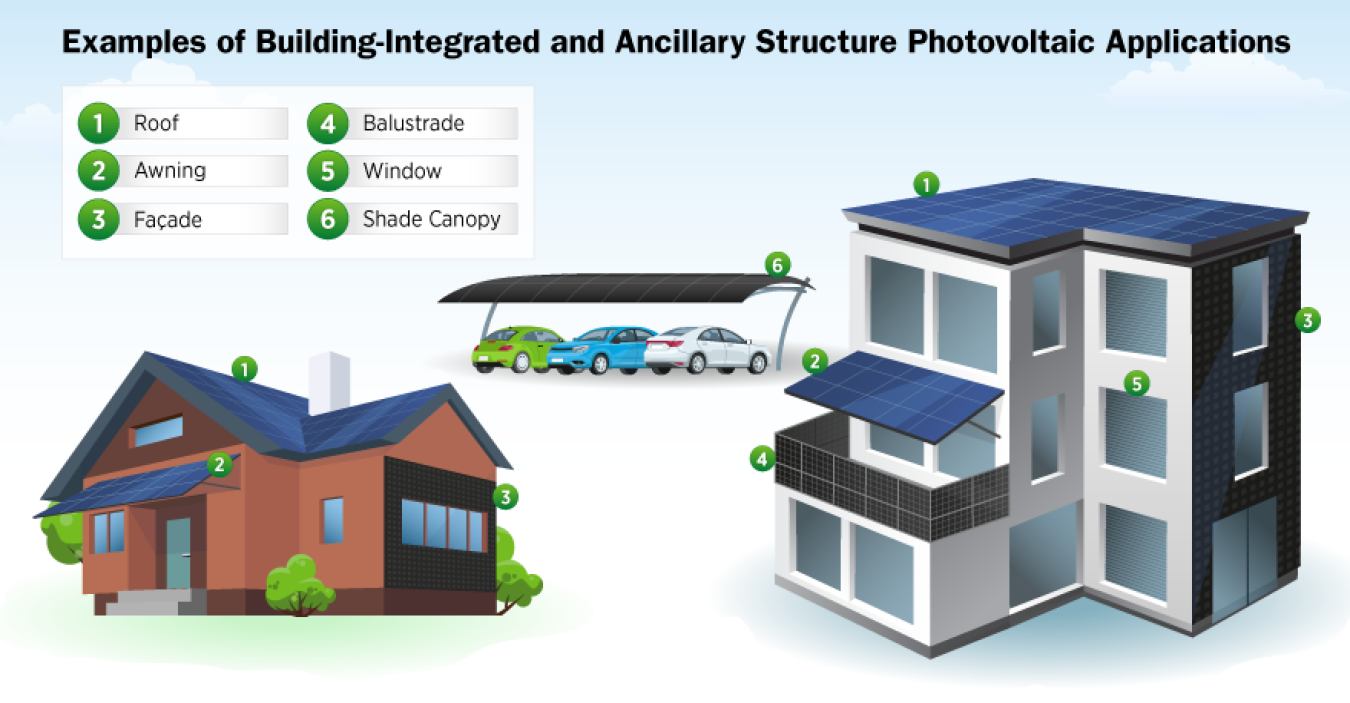Solar photovoltaic modules are where the electricity gets generated, but are only one of the many parts in a complete photovoltaic (PV) system. In order for the generated electricity to be useful in a home or business, a number of other technologies must be in place.
Mounting Structures
PV arrays must be mounted on a stable, durable structure that can support the array and withstand wind, rain, hail, and corrosion over decades. These structures tilt the PV array at a fixed angle determined by the local latitude, orientation of the structure, and electrical load requirements. To obtain the highest annual energy output, modules in the northern hemisphere are pointed due south and inclined at an angle equal to the local latitude. Rack mounting is currently the most common method because it is robust, versatile, and easy to construct and install. More sophisticated and less expensive methods continue to be developed.
For PV arrays mounted on the ground, tracking mechanisms automatically move panels to follow the sun across the sky, which provides more energy and higher returns on investment. One-axis trackers are typically designed to track the sun from east to west. Two-axis trackers allow for modules to remain pointed directly at the sun throughout the day. Naturally, tracking involves more up-front costs and sophisticated systems are more expensive and require more maintenance. As systems have improved, the cost-benefit analysis increasingly favors tracking for ground-mounted systems.
Building-Integrated PV
While most solar modules are placed in dedicated mounting structures, they can also be integrated directly into building materials like roofing, windows, or façades. These systems are known as building-integrated PV (BIPV). Integrating solar into buildings could improve material and supply chain efficiencies by combining redundant parts, and reduce system cost by using existing building systems and support structures. BIPV systems could provide power for direct current (DC) applications in buildings, like LED lighting, computers, sensors, and motors, and support grid-integrated efficient building applications, like electric vehicle charging. BIPV systems still face technical and commercial barriers to widespread use, but their unique value makes them a promising alternative to traditional mounting structures and building materials.

Inverters
Inverters are used to convert the direct current (DC) electricity generated by solar photovoltaic modules into alternating current (AC) electricity, which is used for local transmission of electricity, as well as most appliances in our homes. PV systems either have one inverter that converts the electricity generated by all of the modules, or microinverters that are attached to each individual module. A single inverter is generally less expensive and can be more easily cooled and serviced when needed. The microinverter allows for independent operation of each panel, which is useful if some modules might be shaded, for example. It is expected that inverters will need to be replaced at least once in the 25-year lifetime of a PV array.
Advanced inverters, or "smart inverters," allow for two-way communication between the inverter and the electrical utility. This can help balance supply and demand either automatically or via remote communication with utility operators. Allowing utilities to have this insight into (and possible control of) supply and demand allows them to reduce costs, ensure grid stability, and reduce the likelihood of power outages.
Storage
Batteries allow for the storage of solar photovoltaic energy, so we can use it to power our homes at night or when weather elements keep sunlight from reaching PV panels. Not only can they be used in homes, but batteries are playing an increasingly important role for utilities. As customers feed solar energy back into the grid, batteries can store it so it can be returned to customers at a later time. The increased use of batteries will help modernize and stabilize our country's electric grid.
Additional Information
Learn more about the basics of photovoltaic technology and the solar office's photovoltaics research.
Home » Solar Information Resources » Solar Photovoltaic System Design Basics

